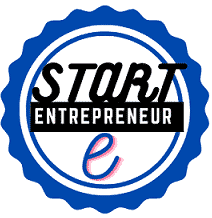Blockchain is considered one of the major tech stories of the previous decade. Everyone seems to be speaking about it—but beneath the surface chatter there’s not all the time a transparent understanding of what blockchain is or the means it works. Despite its status for impenetrability, the essential idea behind blockchain is pretty easy. And it has major potential to alter industries from the underside up.
Blockchain is a technology that enables the safe sharing of information. Data, obviously, is saved in a database. Transactions are recorded in an account e-book known as a ledger. A blockchain is a sort of distributed database or ledger—one of today’s prime tech trends—which means the power to update a blockchain is distributed between the nodes, or members, of a public or non-public pc community. This is called distributed ledger technology, or DLT. Nodes are incentivized with digital tokens or currency to make updates to blockchains.
Blockchain permits for the everlasting, immutable, and clear recording of information and transactions. This, in flip, makes it attainable to change anything that has value, whether that could be a physical merchandise or one thing less tangible.
A blockchain has three central attributes. First, a blockchain database must be cryptographically secure. That means in order to entry or add information on the database, you need two cryptographic keys: a public key, which is basically the address within the database, and the private key, which is a private key that must be authenticated by the network.
Next, a blockchain is a digital log or database of transactions, that means it occurs fully on-line.
And lastly, a blockchain is a database that’s shared across a public or private network. One of essentially the most well-known public blockchain networks is the Bitcoin blockchain. Anyone can open a Bitcoin wallet or turn out to be a node on the community. Other blockchains could also be non-public networks. These are extra relevant to banking and fintech, where individuals must know exactly who’s taking part, who has entry to knowledge, and who has a non-public key to the database. Other types of blockchains include consortium blockchains and hybrid blockchains, each of which combine different elements of public and private blockchains.
Research from the McKinsey Technology Council suggests that by 2027, as much as 10 % of world GDP might be associated with blockchain-enabled transactions. But in the world of blockchain, what’s actual and what is just hype? And how can corporations use blockchain to extend effectivity and create value? Read on to find out.
Learn more about McKinsey’s Financial Services Practice.
How does blockchain work?
A deeper dive might assist in understanding how blockchain and different DLTs work.
When knowledge on a blockchain is accessed or altered, the record is stored in a “block” alongside the information of different transactions. Stored transactions are encrypted by way of distinctive, unchangeable hashes, such as these created with the SHA-256 algorithm. New knowledge blocks don’t overwrite old ones; they are appended together so that any modifications can be monitored. And since all transactions are encrypted, records are immutable—so any changes to the ledger could be recognized by the network and rejected.
These blocks of encrypted knowledge are permanently “chained” to one one other, and transactions are recorded sequentially and indefinitely, creating an ideal audit historical past that permits visibility into past versions of the blockchain.
When new data is added to the community, the vast majority of nodes should confirm and make sure the legitimacy of the new data based on permissions or economic incentives, also recognized as consensus mechanisms. When a consensus is reached, a model new block is created and attached to the chain. All nodes are then up to date to reflect the blockchain ledger.
In a public blockchain network, the first node to credibly prove the legitimacy of a transaction receives an economic incentive. This course of known as “mining.”
Here’s a theoretical example to help illustrate how blockchain works. Imagine that somebody is seeking to purchase a live performance ticket on the resale market. This person has been scammed before by someone selling a pretend ticket, so she decides to strive one of many blockchain-enabled decentralized ticket change websites which have been created prior to now few years. On these websites, each ticket is assigned a singular, immutable, and verifiable identity that’s tied to a real person. Before the concertgoer purchases her ticket, nearly all of the nodes on the network validate the seller’s credentials, ensuring that the ticket is in reality real. She buys her ticket and enjoys the concert.
What is proof of work and the way is it totally different from proof of stake?
Remember the concept of consensus mechanisms talked about earlier? There are two ways blockchain nodes arrive at a consensus: via private blockchains, where trusted companies are the gatekeepers of adjustments or additions to the blockchain, or via public, mass-market blockchains.
Most public blockchains arrive at consensus by both a proof-of-work or proof-of-stake system. In a proof-of-work system, the primary node, or participant, to verify a new knowledge addition or transaction on the digital ledger receives a certain variety of tokens as a reward. To complete the verification process, the participant, or “miner,” should remedy a cryptographic question. The first miner who solves the puzzle is awarded the tokens.
Originally, people on varied blockchains mined as a pastime. But as a outcome of this course of is potentially profitable, blockchain mining has been industrialized. These proof-of-work blockchain-mining pools have attracted attention for the amount of vitality they devour.
In September 2022, Ethereum, an open-source cryptocurrency community, addressed issues around energy utilization by upgrading its software program structure to a proof-of-stake blockchain. Known merely as “the Merge,” this occasion is seen by cryptophiles as a banner moment in the history of blockchain. With proof-of-stake, investors deposit their crypto cash in a shared pool in exchange for the chance to earn tokens as a reward. In proof-of-stake techniques, miners are scored based on the number of native protocol cash they’ve in their digital wallets and the length of time they have had them. The miner with probably the most coins at stake has a greater likelihood to be chosen to validate a transaction and obtain a reward.
How can businesses benefit from blockchain?
Research suggests that blockchain and DLTs might create new alternatives for businesses by lowering threat and decreasing compliance prices, creating extra cost-efficient transactions, driving automated and safe contract success, and growing community transparency. Let’s break it down additional:
* Reduced risk and decrease compliance costs. Banks depend on “know your customer” (KYC) processes to deliver clients on board and retain them. But many current KYC processes are outdated and drive costs of as much as $500 million per yr, per financial institution. A new DLT system may require once-per-customer KYC verification, driving effectivity features, price reduction, and improved transparency and buyer experience.
* Cost-efficient transactions. Digitizing information and issuing them on a common ledger can help save important time and prices. In a letter-of-credit deal, for instance, two firms opted for a paperless answer and used blockchain to commerce nearly $100,000 value of butter and cheese. By doing so, a process that beforehand took as much as ten days was reduced to less than four hours—from issuing to approving the letter of credit score.
* Automated and safe contract fulfillment. Smart contracts are units of directions coded into tokens issued on a blockchain that can self-execute beneath particular conditions. These can enable automated achievement of contracts. For example, one retailer needed to streamline its supply-chain-management efforts, so it began recording all processes and actions, from vendor to buyer, and coding them into smart contracts on a blockchain. This effort not only made it easier to hint the provenance of meals for safer consumption but additionally required less human effort and improved the power to track lost merchandise.
Learn extra about McKinsey’sFinancial Services Practice.
How are blockchain, cryptocurrency, and decentralized finance connected?
Blockchain enables consumers and sellers to commerce cryptocurrencies onlinewithout the need for banks or other intermediaries.
All digital belongings, including cryptocurrencies, are based on blockchain technology. Decentralized finance (DeFi)is a gaggle of applications in cryptocurrency or blockchain designed to replace current financial intermediaries with good contract-based providers. Like blockchain, DeFi functions are decentralized, that means that anybody who has entry to an application has management over any changes or additions made to it. This means that customers potentially have extra direct control over their cash.
What else can blockchain be used for?
Cryptocurrency is simply the tip of the iceberg. Use cases for blockchain are increasing quickly beyond person-to-person exchanges, particularly as blockchain is paired with different emerging technology.
Examples of other blockchain use cases include the next:
* With blockchain, firms can create an indelible audit trail through a sequential and indefinite recording of transactions. This allows for techniques that hold static data (of land titles, for example) or dynamic records (such because the trade of assets).
* Blockchain allows firms to trace a transaction down to its present standing. This allows corporations to determine exactly the place the info originated and the place it was delivered, which helps to prevent data breaches.
* Blockchain helps good contracts, that are applications that trigger transactions mechanically upon success of contract standards.
What are some considerations around the method ahead for blockchain?
While blockchain may be a potential game changer, there are doubts emerging about its true enterprise worth. One major concern is that for all of the idea-stage use circumstances, hyperbolic headlines, and billions of dollars of investment, there stay very few practical, scalable use casesof blockchain.
One purpose for that is the emergence of competing technologies. In the payments space, for example, blockchain isn’t the one fintech disrupting the worth chain—60 % of the practically $12 billion invested in US fintechs in 2021 was focused on payments and lending. Given how complicated blockchain solutions can be—and the reality that simple solutions are incessantly the best—blockchain may not always be the answer to payment challenges.
Looking forward, some consider the worth of blockchain lies in functions that democratize data, enable collaboration, and solve particular pain factors. McKinsey analysis exhibits that these particular use cases are where blockchain holds essentially the most potential, somewhat than these in monetary companies.
Learn more about McKinsey’sFinancial Services Practice.
How may blockchain evolve over time?
In the following five years, McKinsey estimates that there shall be two main development horizons for blockchain:
* Growth of blockchain as a service (BaaS). BaaS is a cloud-based service that builds digital merchandise for DLT and blockchain environments without any setup necessities for infrastructure. This is at present being led by Big Tech companies.
* Interoperability throughout blockchain networks and outside methods. Increased interoperability will mean that disparate blockchain networks and external techniques will be able to view, entry, and share one another’s data whereas sustaining integrity. Hardware standardization and scalable consensus algorithms will allow cross-network use cases—such because the Internet of Thingson blockchain infrastructure.
These trends will be enabled partly because of increased pressure from regulators and shoppers demanding greater provide chain transparency, and partly because of economic uncertainty, as consumers seek out unbiased, centrally regulated techniques. And large corporations launching successful pilots will construct confidence for shoppers and other organizations.
Potential development might be inhibited by a couple of factors: for one, a number of well-known functions have inherently restricted scalability, together with energy or infrastructure requirements. Further, uncertainty about regulatory or governance developments might maintain shoppers shy—for occasion, if there is a lack of readability on who will implement smart contracts. And, lastly, the unresolved threat of cyberattacks stays a fear for potential blockchain users.
What do NFTs should do with blockchain?
Nonfungible tokens (NFTs) are minted on smart-contract blockchains similar to Ethereum or Solana. NFTs symbolize distinctive property that can’t be replicated—that’s the nonfungible part—and can’t be exchanged on a one-to-one basis. These belongings embrace anything from a Picasso portray to a digital lolcat meme. Because NFTs are constructed on high of blockchains, their unique identities and ownership may be verified through the ledger. With some NFTs, the proprietor receives a royalty every time the NFT is traded.
The NFT market is extraordinarily unstable: in 2021, one NFT created by the digital artist Mike Winkelmann, also called Beeple, was soldat Christie’s for $69.3 million. But NFT sales have shrunk dramatically since summer season 2022.
Learn more about McKinsey’sFinancial Services Practice.
How safe is blockchain?
Blockchain has been called a “truth machine.” While it does eliminate lots of the points that arose in Web 2.0, similar to piracy and scamming, it’s not the be-all and end-all for digital safety. The technology itself is actually foolproof, but, ultimately, it is only as noble because the folks utilizing it and pretty much as good as the data they’re including to it.
A motivated group of hackers may leverage blockchain’s algorithm to their benefit by taking management of more than half of the nodes on the community. With this simple majority, the hackers have consensus and thus the power to confirm fraudulent transactions.
In 2022, hackers did precisely that, stealing greater than $600 million from the gaming-centered blockchain platform Ronin Network. This problem, in addition to the obstacles regarding scalability and standardization, will want be addressed. But there’s nonetheless significant potential for blockchain, both for enterprise and society.
For a more in-depth exploration of these topics, see McKinsey’s “Blockchain and Digital Assets” collection. Learn more about McKinsey’s Financial Services Practice—and take a glance at blockchain-related job opportunities if you’re excited about working at McKinsey.
Articles referenced embody:






